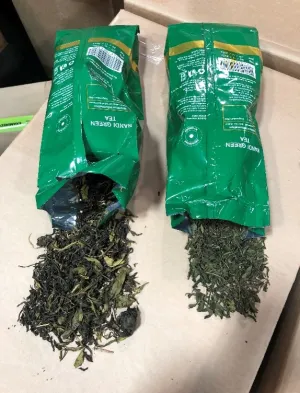SEATTLE — A joint effort between U.S. Homeland Security Agencies, Customs and Border Protection and U.S. Coast Guard within the Seattle Maritime Port led to the seizure of more than 20,000 pounds of dried khat with an estimated street value of $3.6 million.
The khat, which was destined for the United States, was shipped from Kenya as tea. It is the largest seizure in the Puget Sound area. Khat is a plant native in Africa and contains cathinone which causes stimulation and excitement. Its leaves are chewed or dried for tea. Cathinone is known to be very addictive and has been classified as a controlled substance in the United States since May 1987.
On May 27, U.S. Customs and Border Protection officers and U.S. Coast Guard at the Port of Seattle conducted an exam on a container that appeared to contain khat. Samples were extracted from the container and sent to the U.S. Department of Agriculture and Laboratories and Scientific Services confirmed the next day by Animal and Plant Health Inspection Service. The analysis returned presumptive results of Cathinone, a Schedule I, controlled substance. In total, CBP officers seized 623 boxes of khat with a total weight of approximately 20,215 pounds. The shipment was manifested as dried tea leaves from Kenya and destined to Seattle. CBP officers seized the khat for proper storage pending destruction.
“This khat seizure demonstrates Customs and Border Protection officers’ effectiveness, dedication and expertise searching through the tens of thousands of international containers to find the proverbial needle in the haystack,” said J. Rene Ortega, CBP’s Port Director for the Area Port of Seattle. “Khat remains illegal to import into the United States and CBP officers will continue to seize khat and all illicit substances that pose a threat. Drug interdiction at our nation’s borders is one of many ways in which CBP helps to keep our communities safe.”
“This seizure underscores the importance of inter-agency cooperation,” said Capt. Patrick Hilbert, Sector Puget Sound Commander. “The Coast Guard and Customs and Border Patrol frequently train and operate together to safeguard our borders. This success is a direct result of that cooperation.”
Khat is a green, leafy plant typically grown in the Arabian Peninsula and many parts of Africa. It is chewed for its stimulant effect. The World Health Organization classified khat as a drug of abuse in 1980.
The Drug Enforcement Administration classifies khat as a Schedule I narcotic – the most restrictive category used by the DEA – when the leaves are freshly picked. Its principal components, cathine and cathinone, are considered controlled substances in the United States.
CBP routinely conducts enforcement operations on international passengers and cargo and searches for narcotics, unreported currency, weapons, prohibited agriculture, and other illicit products.


